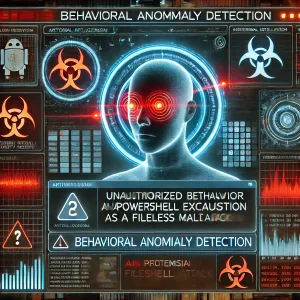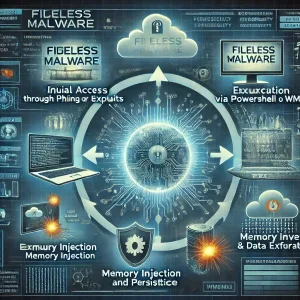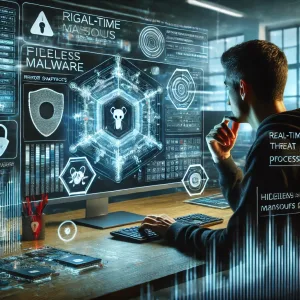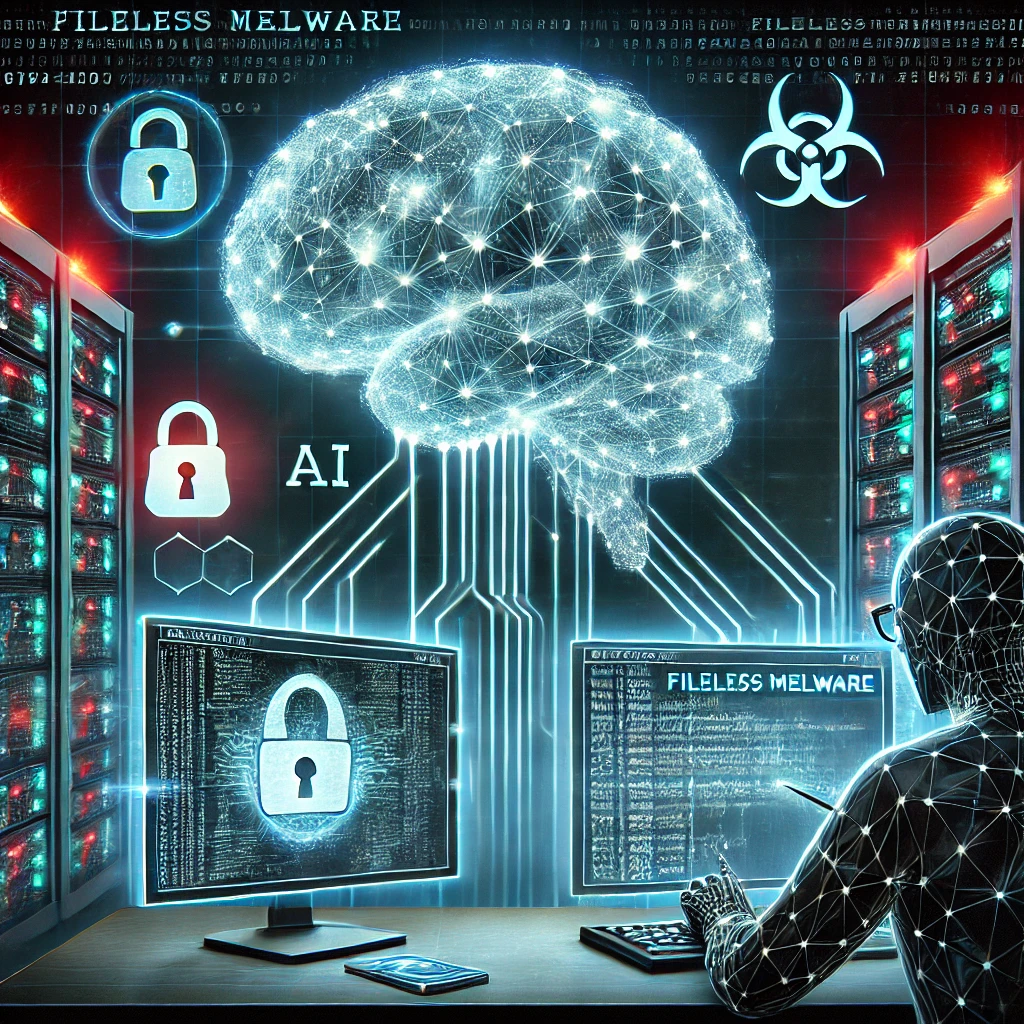Fileless Malware Challenges: A Growing Cybersecurity Concern

Understanding Fileless Malware Challenges in Cybersecurity
Traditional cybersecurity measures focus on detecting and blocking malicious files. However, cybercriminals are now employing more advanced tactics with fileless malware, which operates directly in memory, making it harder to detect and counter. The rise of fileless malware challenges are reshaping the cybersecurity landscape, forcing organizations to rethink their defense mechanisms.
Does Fileless Malware Challenge System Vulnerabilities?

Unlike traditional malware that relies on executable files, fileless malware exploits system vulnerabilities by using legitimate system tools like PowerShell, Windows Management Instrumentation (WMI), and registry scripts. The attack usually follows these stages:
- Exploiting Trusted Applications – Hackers use trusted applications to execute malicious scripts.
- Persistence Mechanism – Malicious code is injected into running system processes.
- Execution in Memory – The attack operates entirely in RAM, leaving minimal forensic evidence.
- Lateral Movement and Data Exfiltration – Attackers move across the network, stealing sensitive data.
🔗 Related Read: The Challenge of Cloud Computing Forensics
Why Countering Fileless Malware Challenges Is Demanding
Most antivirus programs rely on signature-based detection. They scan for known malicious files, but fileless malware operates differently, making it harder to detect. This makes it particularly dangerous for enterprises and governments handling sensitive data. Security teams must adopt advanced threat-hunting techniques and real-time monitoring solutions to counter this evolving threat.
🔗 External Source: MITRE ATT&CK Framework provides a detailed classification of fileless malware tactics.
Real-World Examples of Fileless Malware Challenges
- FIN7 (Carbanak Group): Used fileless techniques to attack financial institutions via PowerShell and WMI.
- Kovter Malware: Operates by hiding in registry entries and executing malicious code without leaving files on disk.
- APT32 (OceanLotus): Conducted cyber espionage against corporations and government agencies using fileless malware techniques.
How Digital Forensics Tackles Fileless Malware Challenges

Forensic experts are key to uncovering and stopping fileless malware threats. Since no traditional files are available for analysis, forensic investigators rely on advanced techniques such as:
- Memory forensics – Capturing and analyzing RAM snapshots.
- Event log analysis – Monitoring PowerShell and WMI activity.
- Network traffic analysis – Detecting abnormal outbound connections.
🔗 Read More: 5 Major Branches of Digital Forensics
Essential Forensic Techniques to Detect Fileless Malware Challenges

- Memory Analysis: Identifying malicious processes in RAM.
- Behavioral Anomaly Detection: Using AI-based security tools to detect abnormal system behavior.
- Endpoint Telemetry Logs: Tracking suspicious script executions.
- Network Packet Inspection: Analyzing unusual network traffic patterns.
- Threat Intelligence Integration: Leveraging real-time threat feeds to detect emerging fileless threats.
Best Practices to Counter Fileless Malware Challenges
Organizations can enhance their security posture against fileless malware threats by implementing the following measures:
- Deploy Behavioral Detection Solutions – Advanced Endpoint Detection and Response (EDR) tools use AI to detect unusual activities.
- Restrict PowerShell and Scripting Tools – Limiting access to scripting tools prevents unauthorized execution.
- Enforce Multi-Factor Authentication (MFA) – Strengthening authentication mechanisms reduces the attack surface.
- Regular Patch Management – Keeping software updated helps mitigate vulnerabilities.
- Monitor Network Traffic – Identifying abnormal traffic patterns can prevent lateral movement within networks.
- Conduct Regular Security Training – Educating employees on social engineering and phishing tactics helps prevent initial infection.
The Future of Cybersecurity Against Fileless Malware Challenges
As cybercriminals innovate, fileless malware threats will continue to evolve. Future attacks may leverage AI-driven automation, cloud-based exploits, and quantum-resistant encryption to remain undetected. To stay ahead, security professionals must adopt:
- Zero-trust security models – Ensuring strict verification before granting access.
- AI-powered forensic tools – Automating threat detection and response.
- Proactive threat-hunting strategies – Identifying threats before they escalate.
- Improved Endpoint Security – Strengthening defenses at the device level.
🔗 Related Read: How AI is Improving Cybersecurity
Key Takeaways on Fileless Malware Challenges
- Fileless malware threats challenge detection as they operate in system memory.
- Trusted applications like PowerShell and WMI are commonly exploited.
- Forensic techniques such as memory analysis and event log inspection are crucial.
- Preventive measures like behavioral detection, patch management, and user training help mitigate risks.
- Future threats may involve AI-driven fileless attacks, requiring advanced cybersecurity frameworks and real-time security intelligence.
Call to Action
Cyber threats are evolving—are your defenses keeping up? Learn how to counter fileless malware threats with cutting-edge forensic strategies. Subscribe now for expert insights, stay ahead of cybercriminals, and fortify your cybersecurity defenses.
Keywords Used:
- Fileless Malware Challenges (Primary Focus Keyword)
- Fileless Malware Threats (Secondary Focus Keyword)
- Cybersecurity threats
- Memory forensics
- PowerShell malware
- Endpoint detection and response (EDR)
- Digital forensics solutions
- Zero-trust security model
- AI-driven cybersecurity
- Advanced threat detection
🔗 External Resource: CISA’s Guidelines on Fileless Malware



